Edible Kingdom - In Your Mush
Edible Kingdom has taken a fascination with fungi to a whole new level thanks to a mushroom movement we can all enjoy
Have you ever noticed how people who are into mushrooms are really, really into mushrooms?
To be fair, fungus is pretty incredible. Just a quick Google search will produce news articles about mushrooms the size of a small town as well as fungus that can digest plastic… seriously.
Arriving at the end of a winding gravel path out the back of Wye, Edible Kingdom has begun a mini ’shroom revolution. Like a scene from a sci-fi movie, entering the ‘fruiting room’, submerged in the moist cool air and under glowing artificial lights, the most amazing pink, blue and gold bio structures can be found.
“I never thought it would be the most interesting subject, but once you get into them, it is fascinating,” says Edible Kingdom co-founder Dr Joe Burman, who is a lecturer in the natural sciences at Canterbury Christ Church University.
Edible Kingdom is now a supplier to the ever-growing community enterprise Kent Food Hubs (kentfoodhubs.co.uk), which brings together the best produce from across the county to its delivery and pick-up locations in places like Coachworks Ashford, bypassing supermarkets.
Joe has worked as a research consultant for some of the biggest food producers in the UK, while his business partner, Dr Philipp Grunewald, is co-founder of a vegan take-away in Germany, works with the Permaculture Association UK and initiated a wholefoods buyers’ cooperative in nearby Wye. It’s safe to say, they are big into producing sustainable food and even supply a number of Kent restaurants with their mushrooms.
But how do you start growing mushrooms from poly-bags in a mobile out the back of Wye?
“It was a bit random,” explains Joe. “But all the best things are, right? I have always been interested in fungi anyway and how it interacts with plants, purely through my biologist background. I started looking at sustainability on our university campus and one of things that we produce is a big mountain of used coffee grounds. I thought, oh that would be a really good substrate for mushrooms, because it has been boiled and pasteurised.”
Getting some of his students involved, Joe started with a few experiments making up grow-bags to try to create some mushrooms and it worked.
“I put a video up on a Facebook page and Philipp saw it. We didn’t know each other at the time, and he contacted me and he knew of this growing space we have here.
“He had a really interesting idea and I’m an opportunist – we walked on to the site and it went from there.”
“Mushrooms aren’t like plants, they’re more like humans. They don’t produce oxygen, they consume oxygen and produce carbon dioxide”
Some two years on and the Edible Kingdom business is growing both literally and figuratively.
A tour of the site coupled with some amazing insight, and you can really see why mushrooms are so engrossing – both Vice and DoubleBlind magazine have featured fungi reports in recent times.
“Mushrooms aren’t like plants, they’re more like humans,” explains Joe. “They don’t produce oxygen, they consume oxygen and produce carbon dioxide.
“What mushrooms really want is fresh air, high humidity and low temperature. So we’re trying to emulate the kind of conditions you’d get going between the summer and into the autumn, when the temperature can drop quickly and it gets cooler.”
At Edible Kingdom, the mushrooms are grown from poly-bags filled with locally-produced hardwood fuel pellets (the carbohydrate source replacing the trees ’shrooms would grow on naturally), bran (the nutrient source) and lime, which pasteurises the bag with extreme alkaline, allowing only the mushrooms and no other organisms to grow. Finally, there are the white blocks of refrigerated mushroom spawn (known as mycelium) to mix in.
“The mycelium is like the root system and grows through the wood, helping it to decay and taking the nutrients out of it,” says Joe. “It’s just cooking, really, adding different ingredients.”
In the ‘fruiting room’, which didn’t at all remind me of the laboratory in Aliens, the mushrooms will sense the fresh air and push through the holes in the poly-bag, growing and looking for low-carbon-dioxide air – which is why you get some really tall and thin mushrooms.
“Mushrooms are effectively the sexy bit of the fungus, the reproductive bit of the fungus,” explains Joe. “The gills underneath have the sexual spores inside. The spores are released and carried away by the wind to produce more mushrooms on the forest floor.”
After a few weeks, one 2kg poly-bag will produce about 200g of beautiful fungi, including different types of Oyster, Shiitake and Lion’s Mane mushrooms.
“The cap is the really tasty bit of the mushroom,” says Joe. “They’ve got a great flavour profile, I think some of them even taste bacon-like!”
Once the nutrients are used, the bags are used for compost by nearby Rebel Farmer (@rebelfarmered – see page 72), completing the process.
The skill and difficulty involved in creating these wonderful delicacies is easy to see, while it is also amazing to understand just how delicate a balance it is for mushrooms to grow in the great outdoors.
“It’s fascinating,” says Joe. “Nature just has a funny way of making these things happen.”
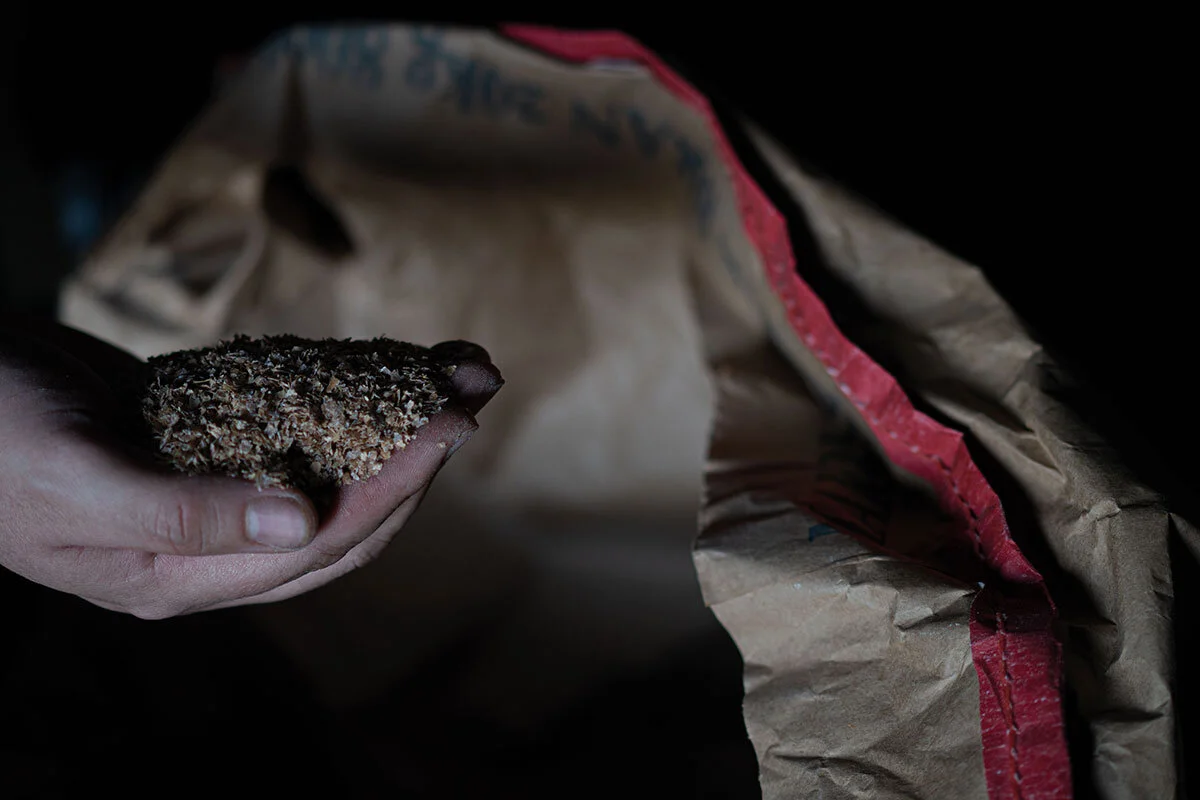
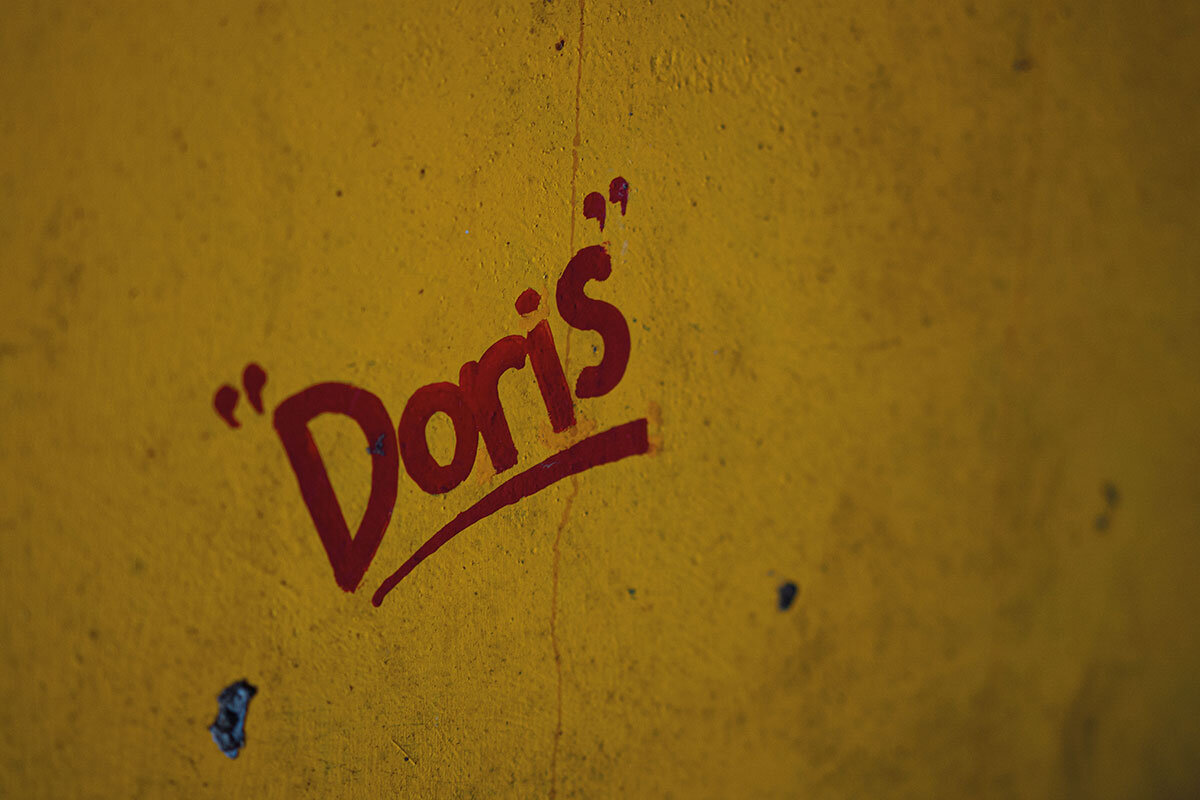
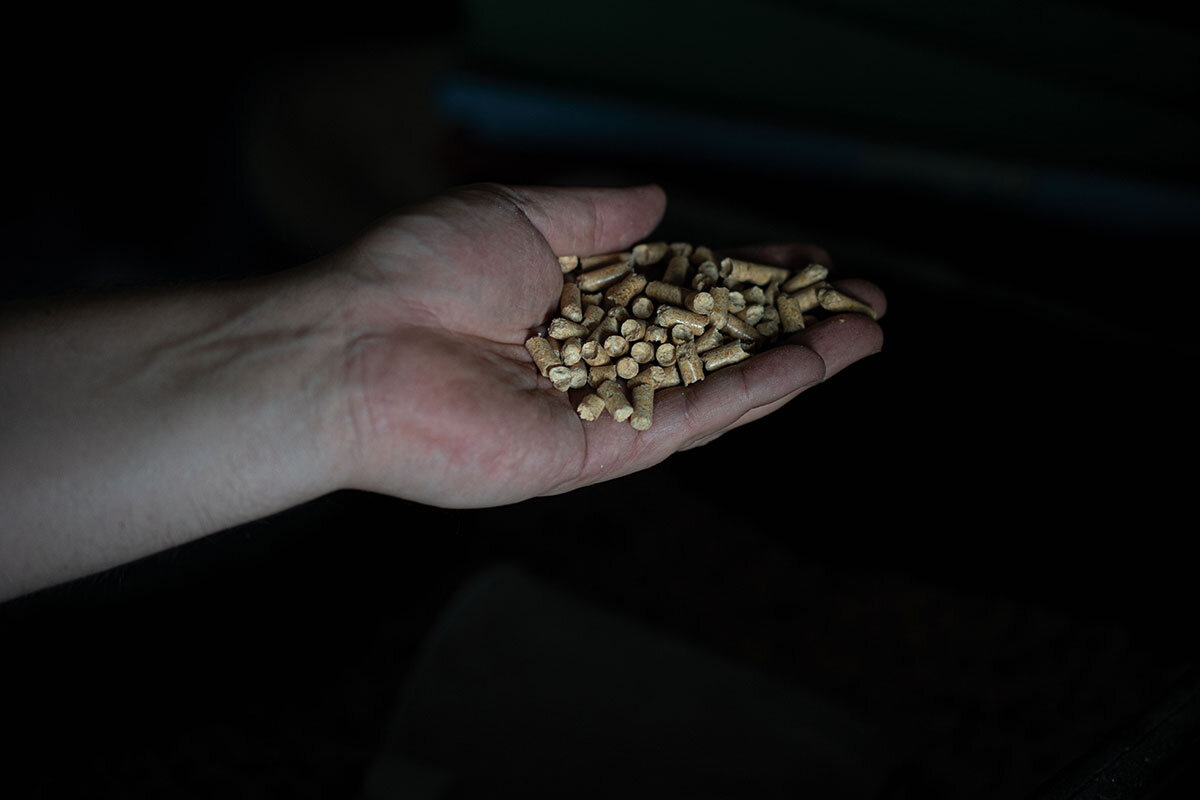
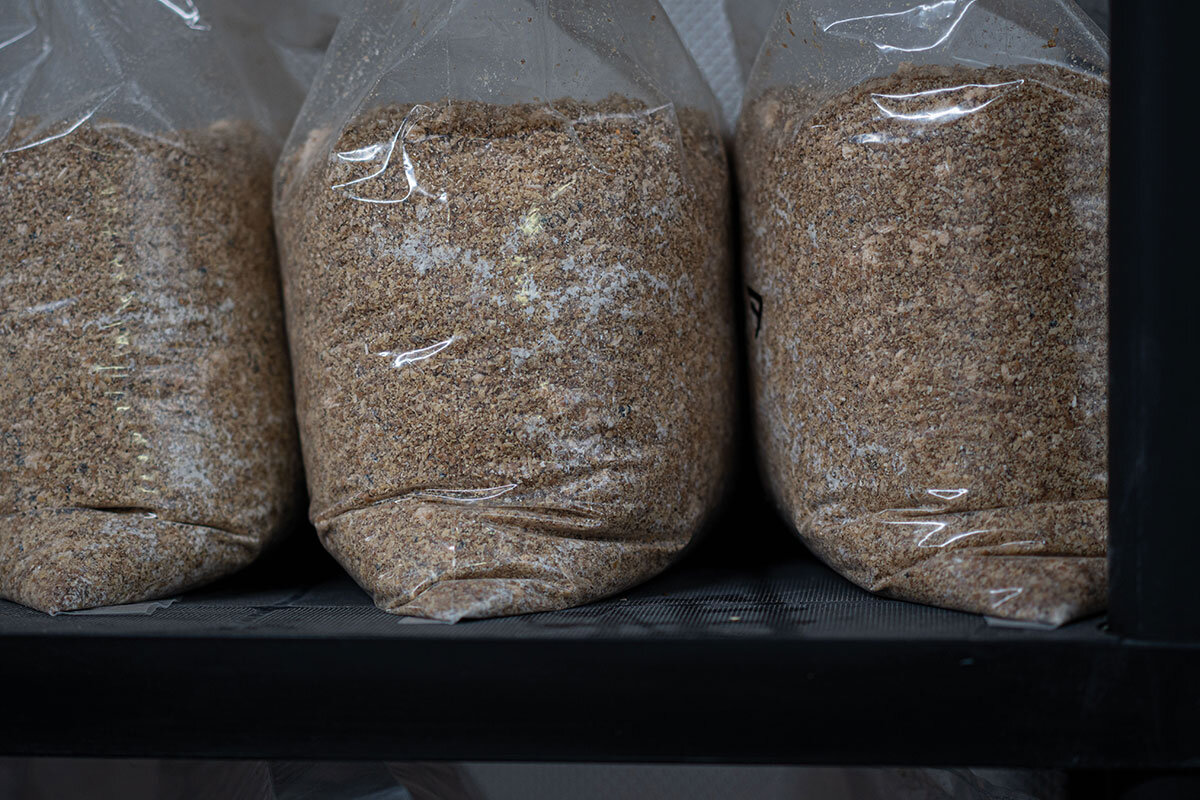
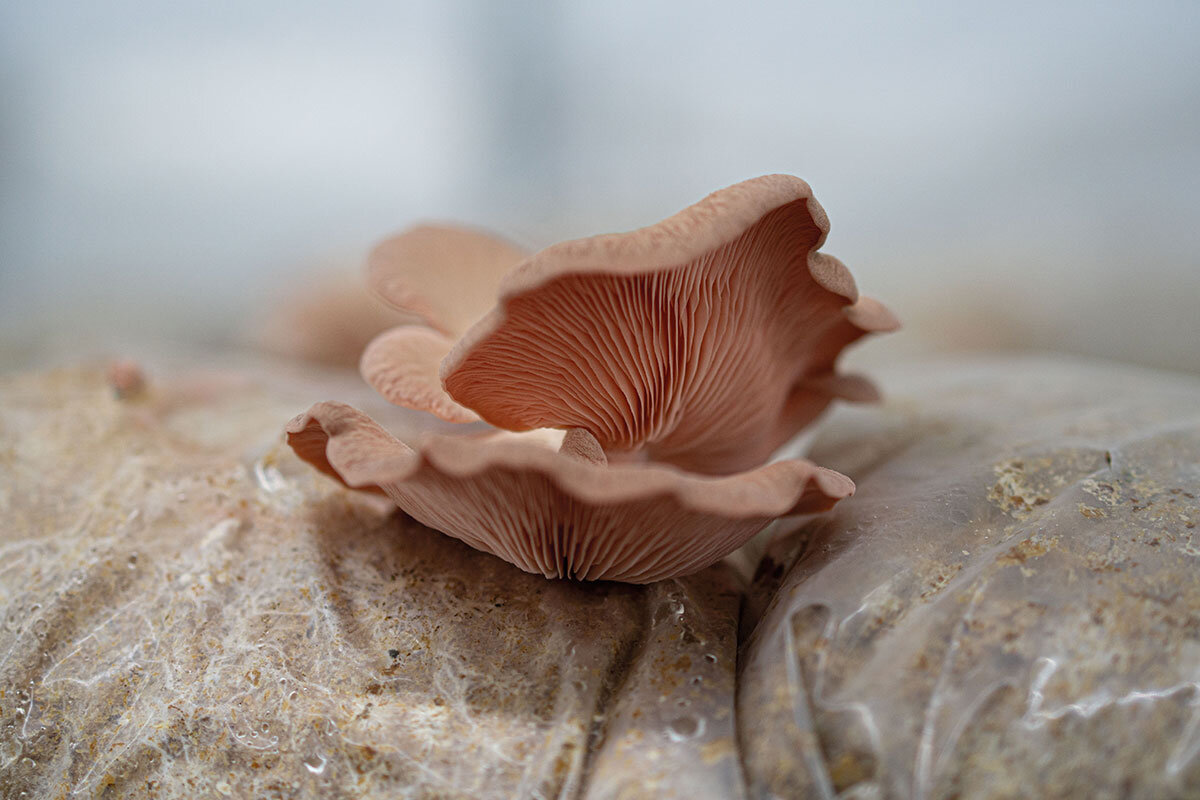

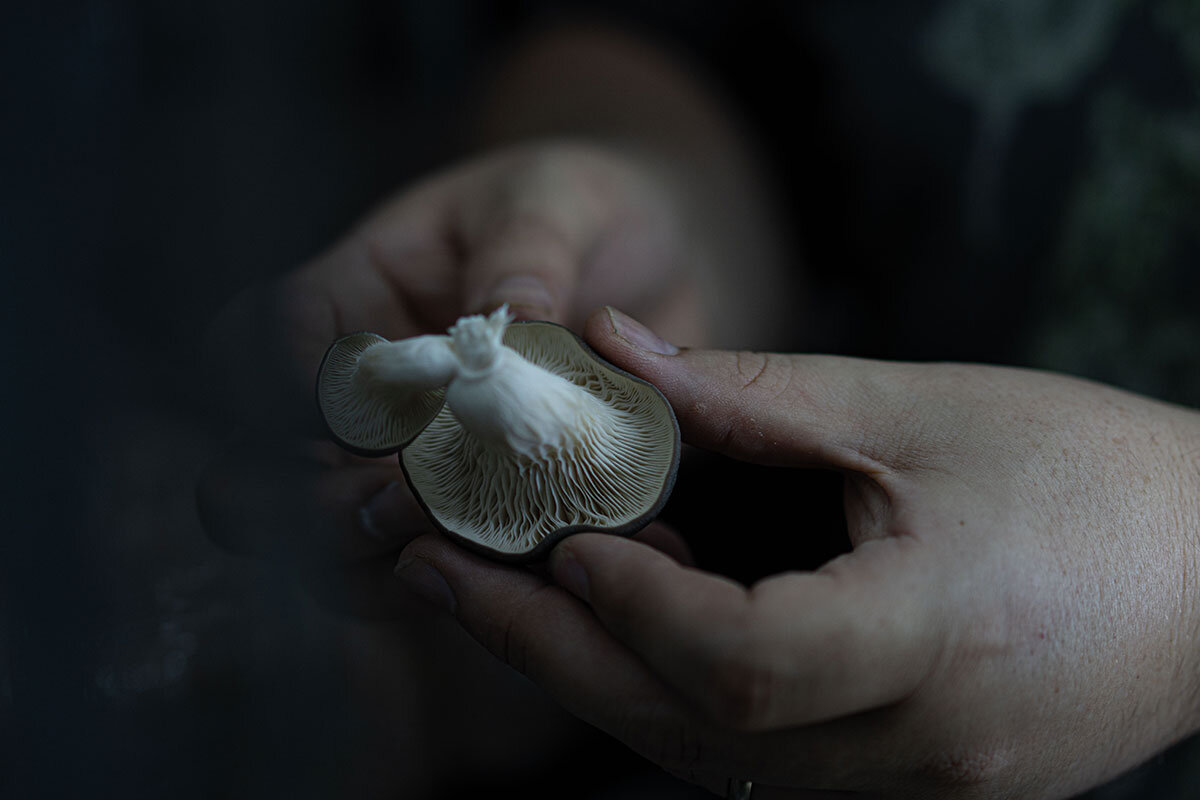
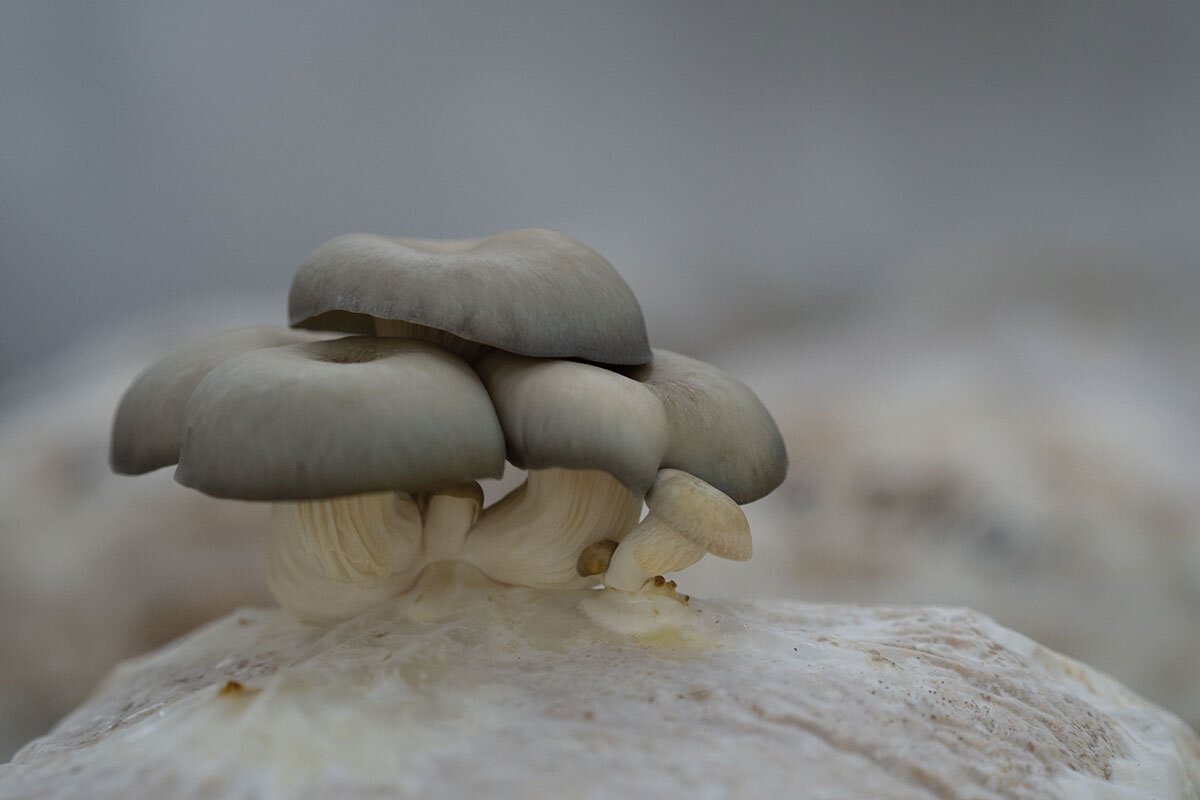
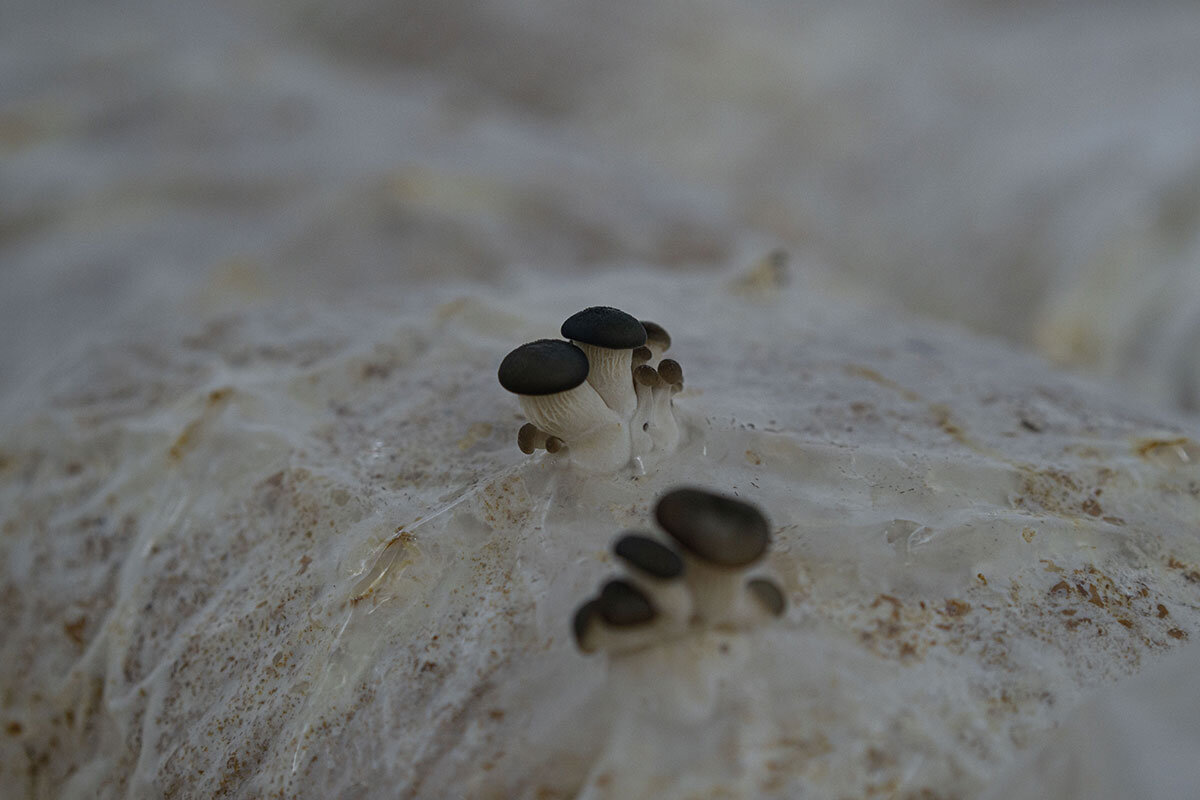
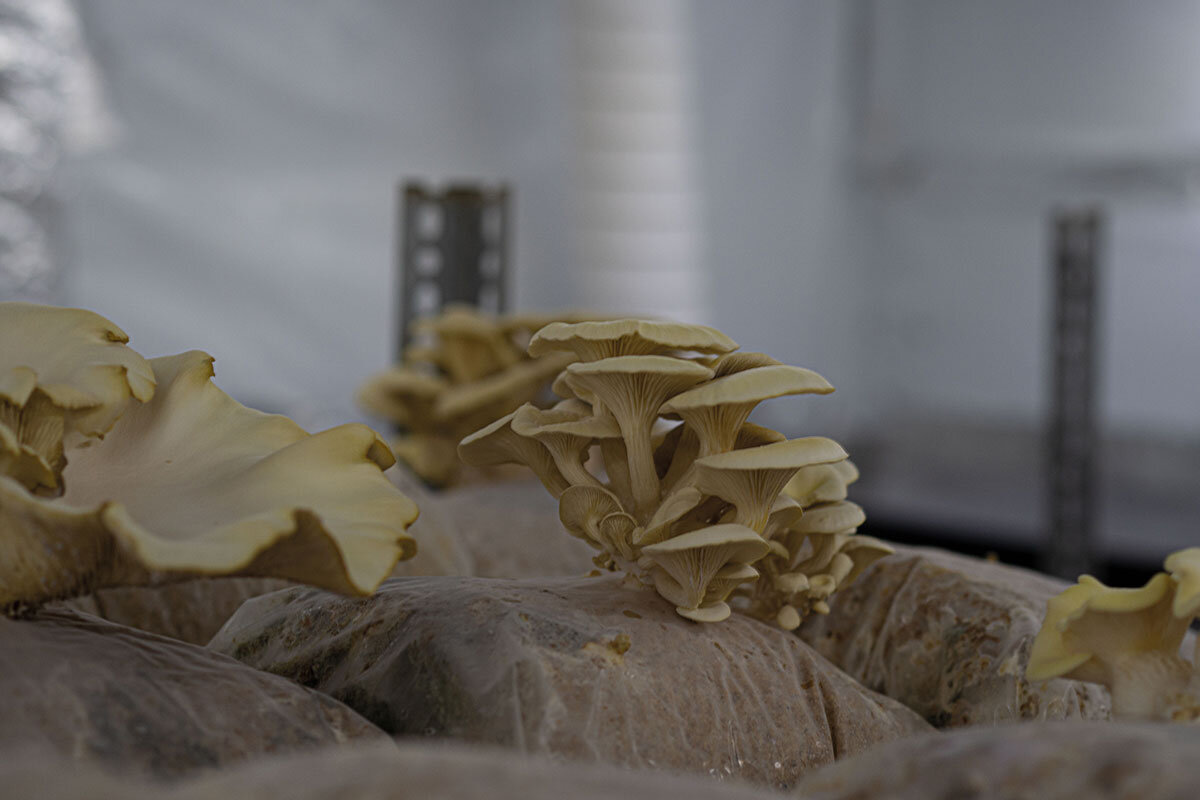

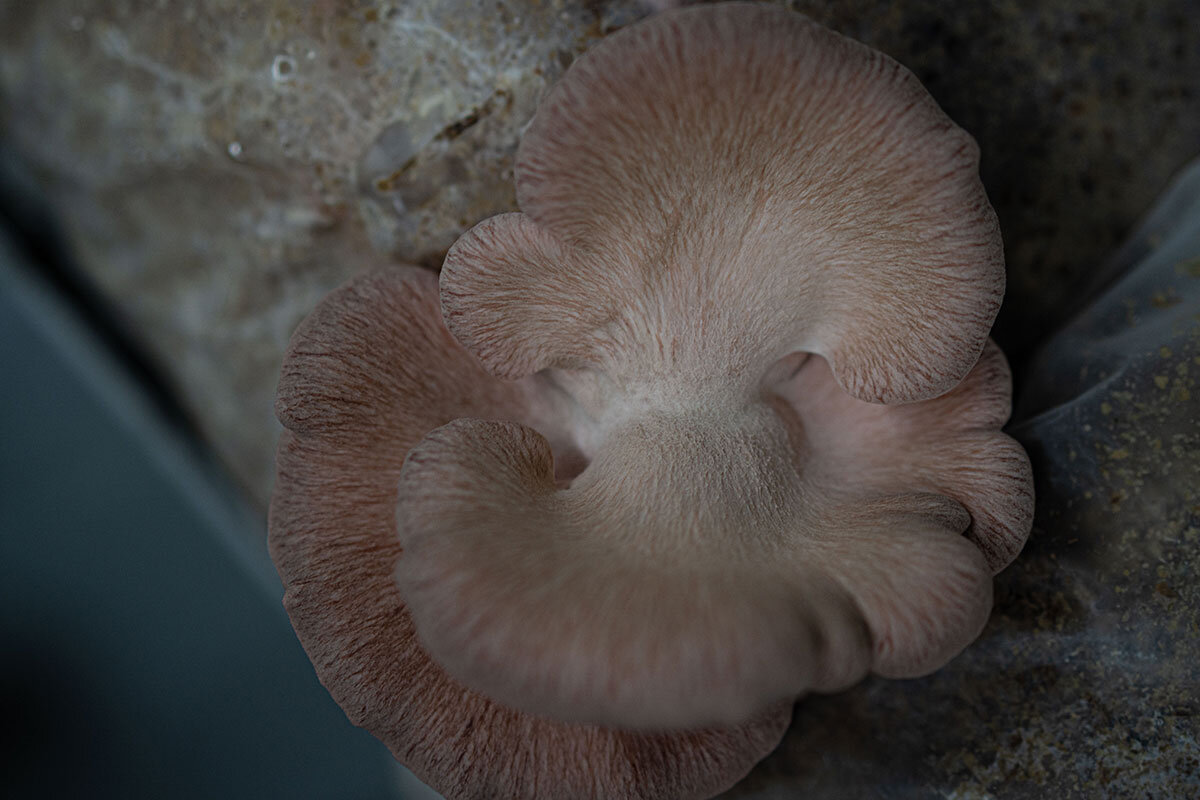

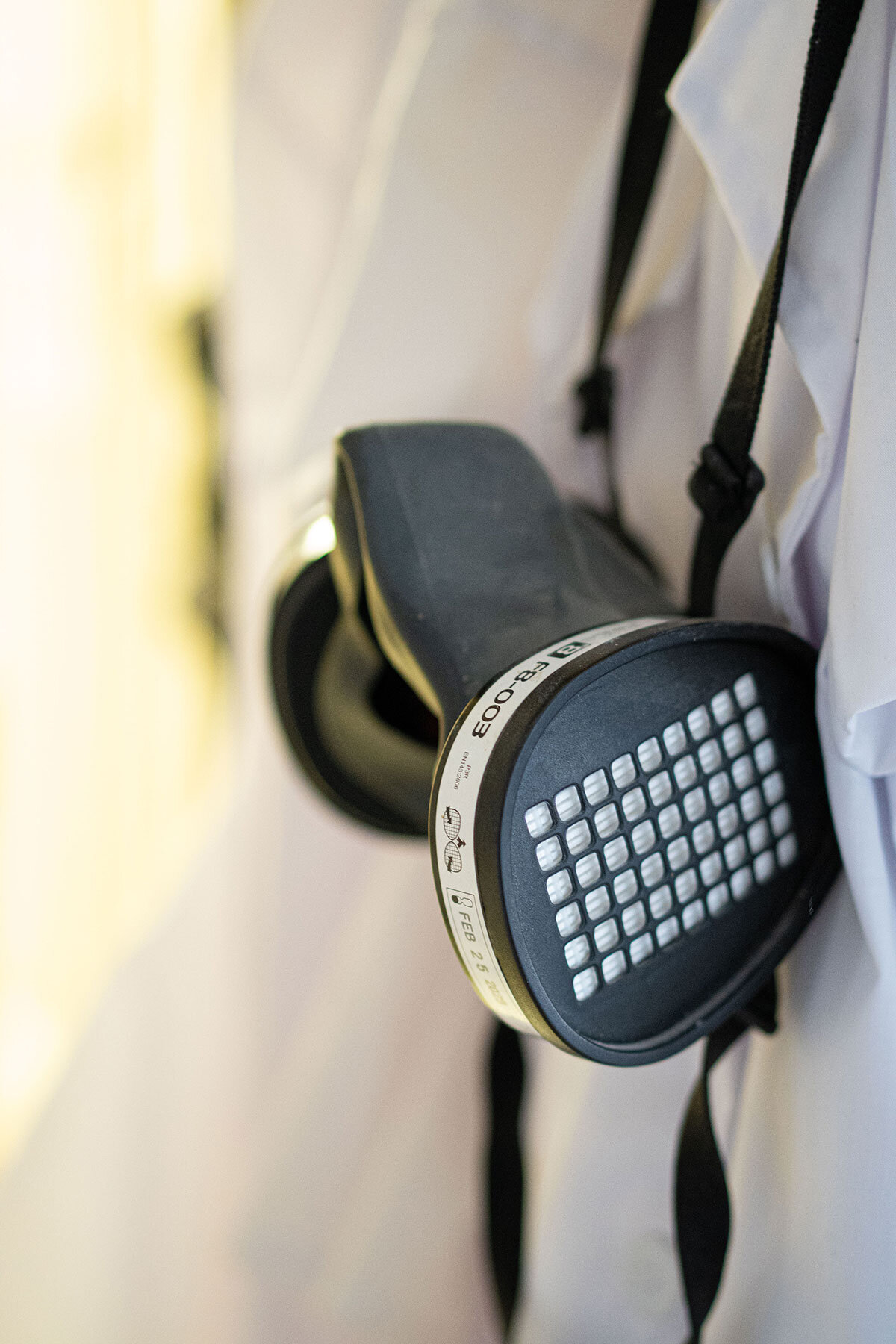
MEET THE SHROOMS
Easily the most unusual mushroom grown at EK, this snowball-shaped shroom has a chicken-like flavour and soaks up flavour from anything you cook it in. Famously this species has demonstrated beneficial health effects in scientific studies; it is thought to promote anti-cancer activity in the immune system, protect cardiovascular health and even limit the ageing process.
The world’s most popular mushroom is slow to grow, but with patience it provides a firm and chewy texture with a bold umami flavour. A favourite for Chinese and Japanese dishes, and delicious with a splash of soy sauce.
An unusual oyster mushroom that is grown mainly for its thick ‘stem’. These chubby mushrooms can be sliced thin and sautéed and are considered by many chefs to be the tastiest available oyster mushroom. Cut them up and serve as a meaty addition to a risotto.
This cold-loving oyster mushroom makes a hearty addition to soups and pasta dishes in the winter. They can be easily torn into strips and thrown into a hot pan with a bit of butter or olive oil and have a meaty texture with a bit of ‘bite’.
A light-coloured mushroom with a meaty flavour and texture, it contains high amounts of lovastatin, a substance known to improve the balance of cholesterol, and goes well with a stir-fry or pasta dish.
A chef’s favourite, this oyster mushroom is a vibrant pink colour with a meaty texture and flavour not dissimilar to bacon. It goes beautifully with a linguine pasta dish during the summer months – a treat for vegan dishes.
This delicate but beautiful oyster mushroom grows well in the summer, providing a light nutty flavour similar to cashew. The golden colour is encouraged by growing under EK’s efficient low-power LED lighting system, impossible to achieve with wild mushrooms.



